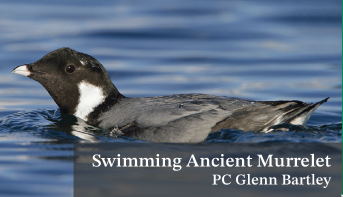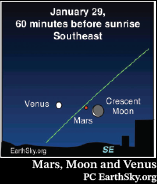| The Science Corner - Birds, Big Sky & Bananas |
 |
| Written by Ro Millham |
| 08 February 2023 |
|
Rosemary (Ro) Millham is an accomplished scientist and teacher who has worked as an aerospace specialist with NASA. She lives in Daajing Giids.
As we know, SGin Xaana Ancient Murrelets breed and nest here. Pairs nest in burrows excavated in soil among tree roots, under logs and in rock crevices. Parents incubate eggs in shifts lasting an average of three days traveling under the cover of darkness. One adult arrives two to four hours after dark, and its mate departs about 90 minutes before sunrise. When the chicks hatch, the adults do not feed them in the burrow. One to three days after hatching, the parents call their chicks from the burrow and they make a mad dash to the sea. Chicks can be snapped up by predators on the way, but those that survive the trek swim out into the ocean in the dead of night. On average, the family will swim up to 30 miles for at least 12 hours. They spend less time on land than any other bird species on earth. Unfortunately, their nests are in constant danger. Non-native species of deer eat the underbrush that murrelets nest in, black rats eat eggs and chicks, and raccoons can kill adults and chicks. Eradication efforts are continuing and populations are monitored yearly.
Keep an eye on the sky this winter. On the morning of January 29th, the Moon is near Mars. In the southeast, Venus is rising as the Morning Star for nine months! And Mars is returning to view after passing behind the Sun. During the two weeks Mars is behind the Sun, scientists cannot communicate with the equipment on Mars. Jupiter is the only planet visible at night in February. However, Venus is at peak brightness in the a.m. for nine months!
Bananas, both organic and non-organic, are a hot item on Haida Gwaii grocery shelves. So here’s a little-known fact about the popular fruit: Bananas are curved for a reason - so they can retrieve sunlight through a process called “negative geotropism.” This means that bananas grow away from the ground, instead of towards the ground. Never underestimate these quirky healthy snacks. Bananas originate in the rainforest and if they grew toward the small rays of light that pass through the thick foliage, they would grow crooked and risk toppling over. So, bananas do not grow directly toward the sun’s rays but grow upward to break through the canopy. |





 Resilient Seabirds
Resilient Seabirds  What’s Up?
What’s Up?  Consider the Banana
Consider the Banana 



